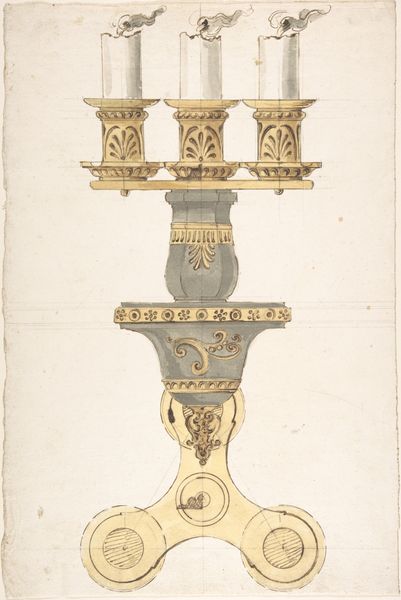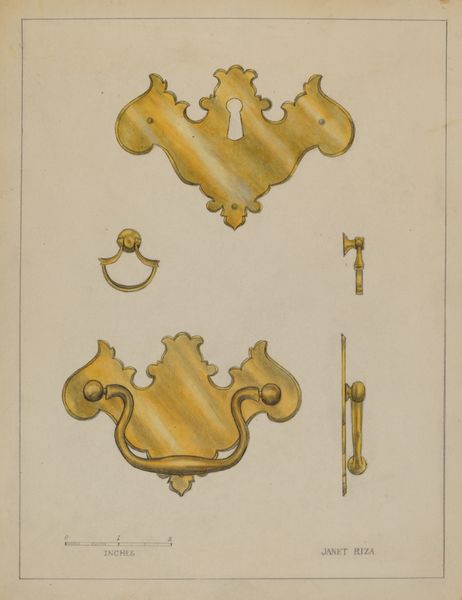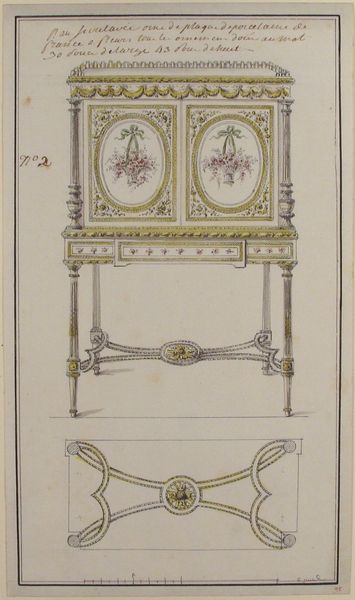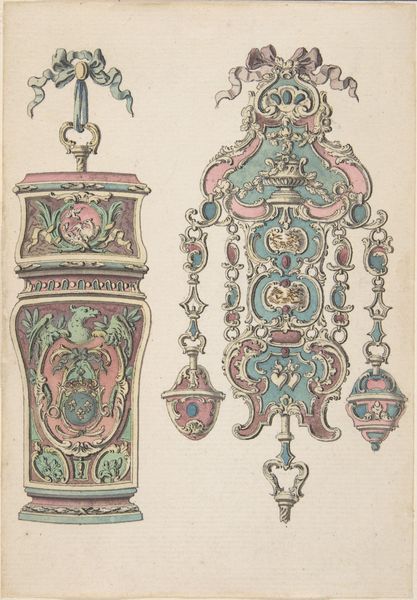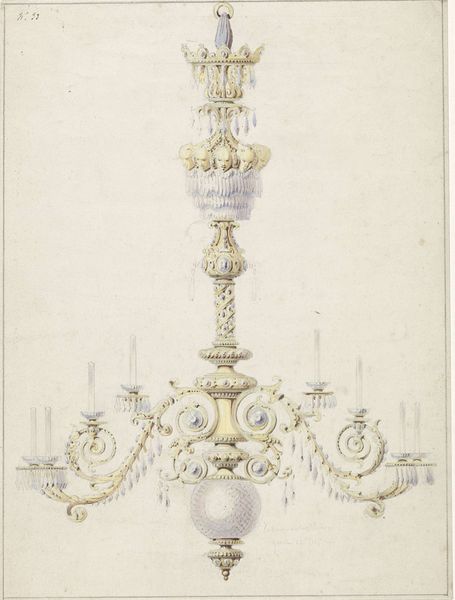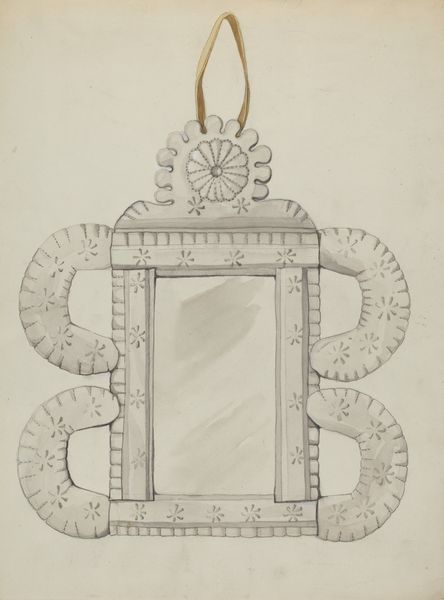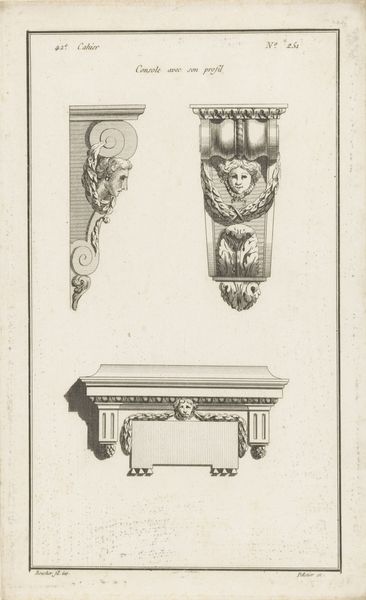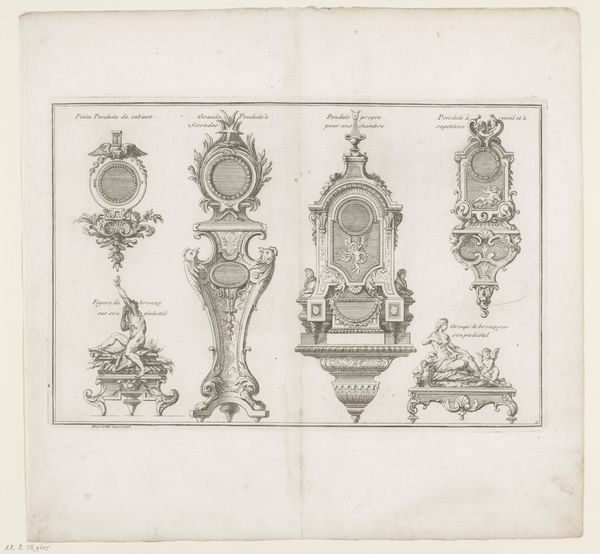
drawing, print, watercolor
drawing
neoclacissism
decorative element
muted colour palette
watercolor
watercolour illustration
decorative-art
decorative art
Dimensions: 10 15/16 x 18 1/16 in. (27.8 x 45.9 cm)
Copyright: Public Domain
Editor: Here we have a piece called "Designs for Door Hardware," dating back to somewhere between 1770 and 1790, currently residing at the Met. It appears to be watercolor and print on paper, illustrating different ornate handle designs. I am struck by how meticulously crafted these designs are for such functional objects. How do you interpret this work, especially considering its purpose? Curator: Well, let’s consider the means of production here. These aren’t just drawings; they’re blueprints for objects meant to be *made*. Someone had to translate this delicate watercolor into brass or iron. How do you think the materiality of metal would influence the design choices made here? Editor: That's an interesting point. The intricacy would certainly be challenging to reproduce. The smooth washes of color might become harsh lines when cast in metal. Curator: Exactly. And think about the social context. Door hardware speaks to who has access, who is kept out. These aren't simple knobs; they're statements of wealth and control. These designs, indicative of Neoclassical style, speak to power structures through their use of motifs, like those classical floral ornamentations and fluting. What kind of labor do you imagine went into both creating this design, and then actually manufacturing the hardware? Editor: I imagine the creation of the design involved skilled draughtsmen and possibly the direct input of the client. Manufacturing it probably required specialized metalworkers with experience in casting or forging. It makes you think about the hierarchy of skill and who gets to decide what's "art" versus craft." Curator: Precisely! The consumption aspect is also important. These were luxury goods. They weren't meant for the masses, but for a specific elite who understood the visual language of power and prestige. Considering labor, materiality and consumption helps to better see past a simplistic reading of decorative design. Editor: It’s fascinating how much social information can be gleaned from something as seemingly simple as a doorknob. Thanks, that helps reframe the image for me! Curator: Absolutely! Now, go forth and examine the world through the lens of materials and production. You never know what hidden stories they might reveal.
Comments
No comments
Be the first to comment and join the conversation on the ultimate creative platform.


